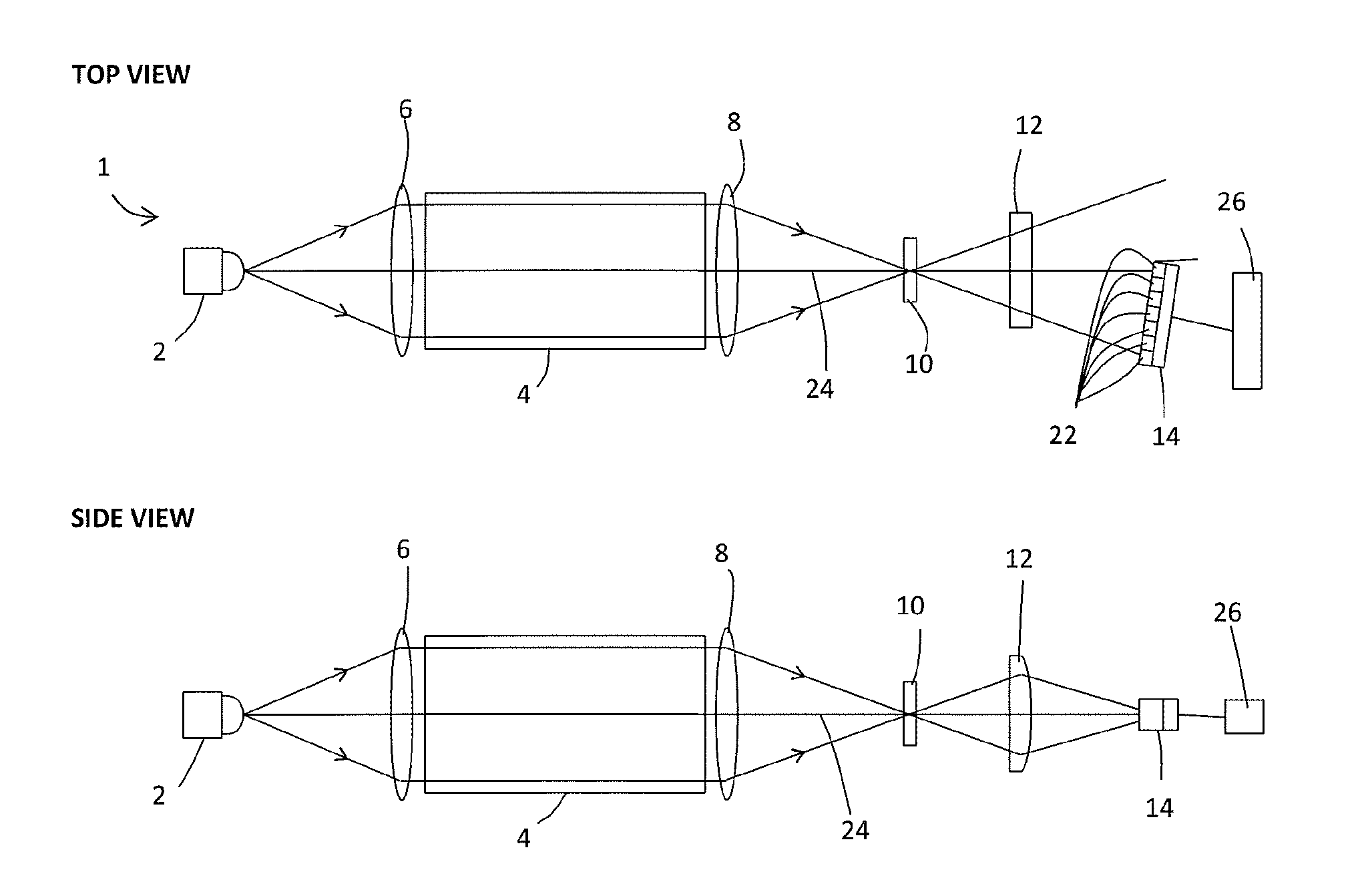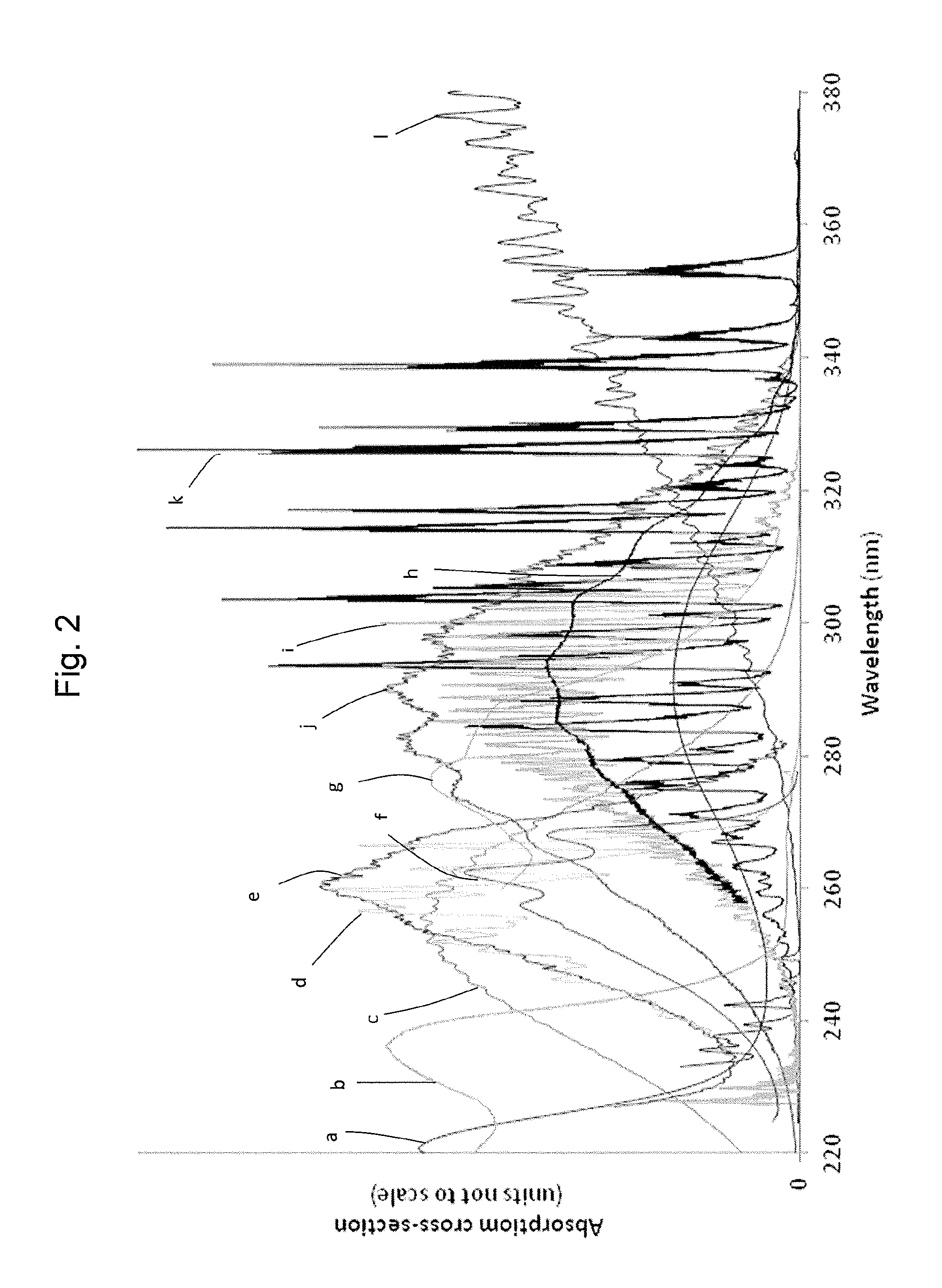Gas analyser
a gas analyzer and gas sensor technology, applied in the field of gas sensors and gas analyzers, can solve the problems of toxic formaldehyde gas, long sample time, toxic, allergenic and carcinogenic, etc., and achieve the effect of simple construction
- Summary
- Abstract
- Description
- Claims
- Application Information
AI Technical Summary
Benefits of technology
Problems solved by technology
Method used
Image
Examples
first embodiment
[0115]
x1=A×D
x2=B×D
x3C×D (2)
where x1 is the first output, x2 is the second output, x3 is the third output, A is related to the intensity of light within the range of wavelengths 346 nm to 337.5 nm, B is related to the intensity of light within the range of wavelengths 337 nm to 332 nm, C is related to the intensity of light within the range of wavelengths 350 nm to 347 nm and D is a scaling constant dependent on the instantaneous brightness of the ultraviolet LED.
second embodiment
[0116]
x1=(a1A+b1B+c3C)×D
x2(a2A+b2B)×D
x3=(a3A+c3C)×D (3)
where x1, x2, x3, A, B, C and D are as per the first embodiment, and where a1, a2 and a3 are weightings of the proportion of A in each of x1, x2 and x3 respectively, b1and b2 are weightings of the proportion of B in each of x1, x2 respectively, and c1 and c3 are weightings of the proportion of C in each of x1 and x3 respectively.
third embodiment
[0117]In a third embodiment the photodiode array of the gas analyser comprises three photodiodes (acting as photosensors). Each photosensor receives light from a separate range of wavelengths. The first photodiode within the photodiode array receives light within the range of wavelengths 347 nm to 350 nm, the second photodiode receives light within the range of wavelengths 337.5 nm to 346 nm and the third photodiode receives light within the range of wavelengths 332 nm to 337 nm. Accordingly, the signal produced by the first photodiode received by the processor corresponds to the third output, the signal produced by the second photodiode received by the processor corresponds to the first output and the signal produced by the third photodiode received by the processor corresponds to the second output.
[0118]Therefore, the processor calculates the measured concentration of formaldehyde within the sample chamber directly from the signals produced by the first to third photodiodes within...
PUM
 Login to View More
Login to View More Abstract
Description
Claims
Application Information
 Login to View More
Login to View More - R&D
- Intellectual Property
- Life Sciences
- Materials
- Tech Scout
- Unparalleled Data Quality
- Higher Quality Content
- 60% Fewer Hallucinations
Browse by: Latest US Patents, China's latest patents, Technical Efficacy Thesaurus, Application Domain, Technology Topic, Popular Technical Reports.
© 2025 PatSnap. All rights reserved.Legal|Privacy policy|Modern Slavery Act Transparency Statement|Sitemap|About US| Contact US: help@patsnap.com



